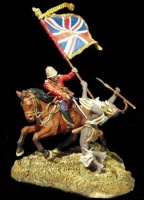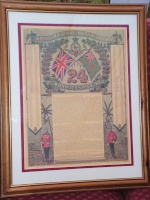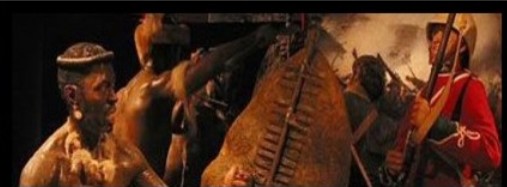| Latest topics | » The Pictorial World - March 15th 1879 Yesterday at 1:13 pm by ben2000 » The lost diary of Pvt James Owen Thu Jul 25, 2024 12:03 pm by miklew » Last of the 24th at Isandhlwana Wed Jul 24, 2024 6:16 pm by John Young » What was the uniform of field marshals/generals in the zulu war? Mon Jul 22, 2024 6:53 am by John Young » Henderson and the NNH at Rorke's Drift  Sat Jul 20, 2024 12:17 pm by SRB1965 » Capt. D. Hayes 1/3rd Regt., NNC Thu Jul 18, 2024 11:11 am by Julian Whybra » The Wrecked Camp Wed Jul 17, 2024 4:33 pm by Julian Whybra » Private N/N John Robert Branch 90th Regiment and his discovered diary Mon Jul 15, 2024 8:53 pm by 1879graves » Private John Scott 24th Regiment a fugitive at large Sun Jul 14, 2024 12:06 pm by 1879graves » 90th foot sgt T. Collins 214 Sun Jul 14, 2024 10:57 am by johnman » Baron Von Steitencron Wed Jul 10, 2024 3:10 pm by Julian Whybra » Sgt Joseph Windridge, Defender of Rorke's Drift - Memorial Tue Jul 09, 2024 3:15 am by 90th » Writing advice Sun Jul 07, 2024 4:04 pm by Julian Whybra » South Africa 1877-79, 1 clasp, 1877-8-9 (4389 Fr. Sergt. S. Smith. O/2. Bde. R.A.) Sun Jul 07, 2024 9:30 am by rai » The trashing of the Zulu monument to the brave warriors at Isandlawana March 12, 2024 has been blamed on scrap metal scavengers. Thu Jul 04, 2024 7:41 pm by ADMIN» The Goodwill Zulu Festival: Celebrating the Welsh and KwaZulu Natal Shared Heritage. Thu Jul 04, 2024 7:27 pm by ADMIN» Any nominal role of G Coy 2/24th regiment  Thu Jul 04, 2024 11:18 am by Wayne » Bassage Diary Thu Jul 04, 2024 9:31 am by Julian Whybra » Prior to Sihayo's Kraal  Thu Jul 04, 2024 9:19 am by 90th » British Fort Locations Thu Jul 04, 2024 3:40 am by 90th » Sergeant 1064 Tom Hick / Hicks G Company 2/24th Regiment Wed Jul 03, 2024 11:05 am by Julian Whybra » A Hungarian soldier in the Zulu War (?) Fri Jun 28, 2024 2:31 pm by Mr M. Cooper » Private 25B/279 Henry Sears Bugler E Company 24th Reg. KIA Isandlwana Thu Jun 27, 2024 1:07 pm by gardner1879 » Hamilton Browne's birthday Fri Jun 21, 2024 9:22 am by Julian Whybra » Zulu "Corps" Thu Jun 20, 2024 6:01 pm by Hobbes » Army Pay Department Personnel Thu Jun 20, 2024 11:49 am by Julian Whybra » Ntshingwayo birth date Sun Jun 16, 2024 11:37 am by Hobbes » Zibhebhu and Cetshwayo's family Wed Jun 05, 2024 9:11 pm by Julian Whybra » Smith's Store/Hotel Wed Jun 05, 2024 6:06 pm by Julian Whybra » Corporal James Frowen Williams F Company.  Tue Jun 04, 2024 5:20 pm by Julian Whybra » Shaka iLembe Sat Jun 01, 2024 1:27 pm by Jon84 » Bugler 1415 Thomas Finn / Flin 90th Regiment  Sat May 25, 2024 11:28 am by johnman » Inspector-General Evelyn Richard Hugh Pollard Tue May 14, 2024 10:13 am by ADMIN» Alfred Fairlie Henderson photographs. Sat May 11, 2024 8:01 am by Julian Whybra » Fairlie's Native Police Thu May 02, 2024 9:12 pm by Hobbes |
| July 2024 | | Mon | Tue | Wed | Thu | Fri | Sat | Sun |
|---|
| 1 | 2 | 3 | 4 | 5 | 6 | 7 | | 8 | 9 | 10 | 11 | 12 | 13 | 14 | | 15 | 16 | 17 | 18 | 19 | 20 | 21 | | 22 | 23 | 24 | 25 | 26 | 27 | 28 | | 29 | 30 | 31 | | | | |  Calendar Calendar |
|
| Top posting users this month | |
| New topics | » The Pictorial World - March 15th 1879 Yesterday at 1:13 pm by ben2000 » The lost diary of Pvt James Owen Thu Jul 25, 2024 12:03 pm by miklew » Last of the 24th at Isandhlwana Wed Jul 24, 2024 5:53 pm by miklew » What was the uniform of field marshals/generals in the zulu war? Sun Jul 21, 2024 12:30 pm by darthvaix » Henderson and the NNH at Rorke's Drift  Fri Jul 19, 2024 1:29 pm by SRB1965 » Capt. D. Hayes 1/3rd Regt., NNC Wed Jul 17, 2024 10:52 pm by Julian Whybra » The Wrecked Camp Sun Jul 14, 2024 8:51 am by 61MECH » The trashing of the Zulu monument to the brave warriors at Isandlawana March 12, 2024 has been blamed on scrap metal scavengers. Thu Jul 04, 2024 7:41 pm by ADMIN» The Goodwill Zulu Festival: Celebrating the Welsh and KwaZulu Natal Shared Heritage. Thu Jul 04, 2024 7:27 pm by ADMIN |
| Zero tolerance to harassment and bullying. | |
Due to recent events on this forum, we have now imposed a zero tolerance to harassment and bullying. All reports will be treated seriously, and will lead to a permanent ban of both membership and IP address.
Any member blatantly corresponding in a deliberate and provoking manner will be removed from the forum as quickly as possible after the event.
If any members are being harassed behind the scenes PM facility by any member/s here at 1879zuluwar.com please do not hesitate to forward the offending text.
We are all here to communicate and enjoy the various discussions and information on the Anglo Zulu War of 1879. Opinions will vary, you will agree and disagree with one another, we will have debates, and so it goes.
There is no excuse for harassment or bullying of anyone by another person on this site.
The above applies to the main frame areas of the forum.
The ring which is the last section on the forum, is available to those members who wish to partake in slagging matches. That section cannot be viewed by guests and only viewed by members that wish to do so. |
| Fair Use Notice | | Fair use notice.
This website may contain copyrighted material the use of which has not been specifically authorised by the copyright owner.
We are making such material and images are available in our efforts to advance the understanding of the “Anglo Zulu War of 1879. For educational & recreational purposes.
We believe this constitutes a 'fair use' of any such copyrighted material, as provided for in UK copyright law. The information is purely for educational and research purposes only. No profit is made from any part of this website.
If you hold the copyright on any material on the site, or material refers to you, and you would like it to be removed, please let us know and we will work with you to reach a resolution. |
| | | Winchester Repeating Arms Company. Repeating Rifles 1873 |  |
| | | Author | Message |
|---|
John

Posts : 2558
Join date : 2009-04-06
Age : 61
Location : UK
 |  Subject: Winchester Repeating Arms Company. Repeating Rifles 1873 Subject: Winchester Repeating Arms Company. Repeating Rifles 1873  Tue Oct 25, 2011 10:17 pm Tue Oct 25, 2011 10:17 pm | |
| Winchester Model 1873 rifle
"The Gun that Won the West"
Type Rifle
Place of origin United States
I wasn't aware that repeating rifles were used as early as 1873, Were the British experimenting with repeating rifles in the 1800s. They would have been very useful in the Zulu War.
Service history
Used by United States
Production history
Designed 1873
Manufacturer Winchester Repeating Arms Company
Produced 1873–1919
Number built c.720,000
Variants Full-stocked "Musket", Carbine, Sporting model
Specifications
Weight 9.5lb (4.3kg)
Length 49.3in (125.2cm)
Barrel length 30in (76.2cm)
Caliber .44-40 Winchester, .38-40 Winchester, .32-20 Winchester, .22 rimfire
Action Lever-action
Feed system 15 round tube magazine
Sights Graduated rear sights, Fixed-post front sights |
|   | | Guest
Guest
 |  Subject: Re: Winchester Repeating Arms Company. Repeating Rifles 1873 Subject: Re: Winchester Repeating Arms Company. Repeating Rifles 1873  Wed Oct 26, 2011 1:26 pm Wed Oct 26, 2011 1:26 pm | |
| During the American Civil War in the 1860s, various repeating rifles were used. Strangely, during the Indian Campaign the cavalry were issued single-shot carbines, against many indians who had acquired the former repeaters. That didn't help Gen. Custer and his men at Little Bighorn in 1876 - outnumbered and outgunned by hostiles armed with better weaponry. I think it had to do with cost, etc., in the British army back then, but also with repeaters you stand the chance of wasted ammo, rather than controlled volley-fire by ranks armed with single-shot rifles. |
|   | | Chelmsfordthescapegoat

Posts : 2593
Join date : 2009-04-24
 |  Subject: Re: Winchester Repeating Arms Company. Repeating Rifles 1873 Subject: Re: Winchester Repeating Arms Company. Repeating Rifles 1873  Wed Oct 26, 2011 2:03 pm Wed Oct 26, 2011 2:03 pm | |
| - Quote :
- but also with repeaters you stand the chance of wasted ammo, rather than controlled volley-fire by ranks armed with single-shot rifles.
20,000 rounds were fired at RD. 500 dead or there abouts.  |
|   | | Guest
Guest
 |  Subject: Re: Winchester Repeating Arms Company. Repeating Rifles 1873 Subject: Re: Winchester Repeating Arms Company. Repeating Rifles 1873  Wed Oct 26, 2011 2:24 pm Wed Oct 26, 2011 2:24 pm | |
| CTSG, yes that was some amount of ammo used wasn't it ?  Good job they had enough or they'd have been using the bayonet a great deal more than they did. I wonder, would they have managed to hold the post with much less ammo availability ? |
|   | | Dave

Posts : 1603
Join date : 2009-09-21
 |  Subject: Re: Winchester Repeating Arms Company. Repeating Rifles 1873 Subject: Re: Winchester Repeating Arms Company. Repeating Rifles 1873  Wed Oct 26, 2011 3:05 pm Wed Oct 26, 2011 3:05 pm | |
| I did read somewhere, that the ammunition supply at RD was quite dire near the end of the Battle. And if another attack had been launched by the Zulu's R.D would have fallen. (Thanks what I read)  |
|   | | 24th

Posts : 1862
Join date : 2009-03-25
 |  Subject: Re: Winchester Repeating Arms Company. Repeating Rifles 1873 Subject: Re: Winchester Repeating Arms Company. Repeating Rifles 1873  Wed Oct 26, 2011 3:12 pm Wed Oct 26, 2011 3:12 pm | |
| - Quote :
- I did read somewhere, that the ammunition supply at RD was quite dire near the end of the Battle
Dave it could have been here. [You must be registered and logged in to see this link.] |
|   | | Drummer Boy 14

Posts : 2008
Join date : 2011-08-01
Age : 27
 |  Subject: Re: Winchester Repeating Arms Company. Repeating Rifles 1873 Subject: Re: Winchester Repeating Arms Company. Repeating Rifles 1873  Wed Oct 26, 2011 4:40 pm Wed Oct 26, 2011 4:40 pm | |
| Each man had around 70 rounds on him and they had aroud a box and a half left in reserve.
This was observed by Chard himself.
The Zulu casulties where estimated by a number of authors at around 1,000 killed and wounded
600 dead and 400 wounded
Mike Snook worked out they could last for around another 2 hours if they
fired undestrict control and didnt blaze away.
Cheers
DB14 |
|   | | | | Winchester Repeating Arms Company. Repeating Rifles 1873 |  |
|
Similar topics |  |
|
| | Permissions in this forum: | You cannot reply to topics in this forum
| |
| |
| |
